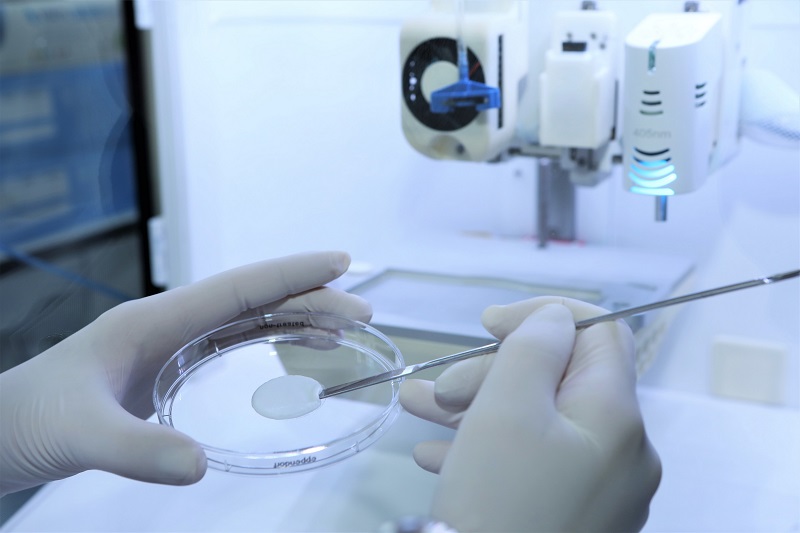Scientists from the Foundation for Research and Development of Science and the Polbionica company, under the direction of Dr Michał Wszoła, MD, intend to start clinical trials of the bionic pancreas they have developed. This is hope for many patients with chronic pancreatitis and serious complications resulting from type 1 diabetes, who are now dependent on external insulin supply.
Transplantation of a 3D-printed organ would be minimally invasive, without long queues for a suitable donor and, most importantly, all indications are that it would be as effective as transplantation of a pancreas taken from a donor. Work on the bionic pancreas has been ongoing for several years.
“The whole process of creating a bionic pancreas involves putting pancreatic islands mixed with one bio-ink, which is in the form of a paste, into one syringe. In the other, we put endothelial cells together with the bio-ink in the same form. Then, with the help of a computer, we put the layers – one layer of pancreatic islands, with the lines of the vascular system and endothelial cells in between. In this way, we build by computer an organ that resembles an iPhone in size and appearance. In fact, it is 1 cm thick, 10 cm long and about 5 cm wide, which is similar to our biological pancreas. And it also resembles it, only with a small exception. It does not produce digestive juices, but only hormones”, explains Prof. Wszoła.
Currently, the biggest challenge in transplantology is that there are not enough organs for transplantation. In addition, transplantation of the entire pancreas is a major challenge due to the complicated vascular system, while transplantation of the pancreatic islets alone is flawed by the fact that during their isolation the vascular system and the matrix surrounding the pancreatic islets – the so-called extracellular matrix – are destroyed.
Arkadiusz Słomczyński





